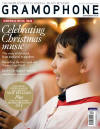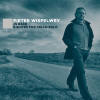Texte paru dans: / Appeared in:
*
GRAMOPHONE (12/2012)
Pour s'abonner /
Subscription information
Evil Penguin
EPRC012

5425008377544 (ID255)
Reviewer: Julie Anne Sadie
Four- and five-string cellos for Wispelwey’s third Suites taping
The inclusion of a DVD with Pieter Wispelwey’s third recording of the Bach Suites is an insightful bonus. The Dutch cellist is charming and articulate, and his views on the works are well supported by contributions from the distinguished Bach scholars and performers Professors John Butt and Laurence Dreyfus.
They consider the Suites as having possibly been composed in two groups of three, the first group earlier and relatively homogeneous, the last three decidedly idiosyncratic. At issue is the question of what kind of instrument or, more likely, instruments Bach might have had in mind for these works and, arising from that, what might be the most plausible and playable solutions to the unprecedented technical challenges he posed. (Others have, of course, grappled with this before in recordings reviewed in these pages, performing the Suites on the viola, an assortment of cellos and even the viola da gamba.) The three conclude that ‘the Suites are not what they seem’, almost ‘eluding the cello medium’, and ‘represent a much more audacious arid experimental enterprise’ than Bach’s works for solo violin.
Wispelwey has tuned his four— and five string cellos to 392 for this recording, which facilitates many stylistic aspects of his performance but inevitably results in a softer edged, mellow tone — more viol-like — than normally associated with recordings of these works. He plays with deep affection and understanding. He experiments with Bach’s musical rhetoric some will find it over-phrased. The Preludes lend themselves to a degree of rhapsody but Wispelwey often pushes the limits by inserting unexpected slivers of silence before the resolution of harmonic progressions, disturbing (at least for me) the natural sweep and inevitability of the musical line. In some of the dances in the first three Suites (Allemandes, Courantes and Sarabandes) he subtly destabilises the pulse, pushing and stretching it, as if trying to find yet more to say about them when less might have been more. His bowing — often emulating the sound of the plucking of a lute — is masterful and always full of character.
Cliquez l'un ou l'autre
bouton pour découvrir bien d'autres critiques de CD
Click either button for many other reviews


